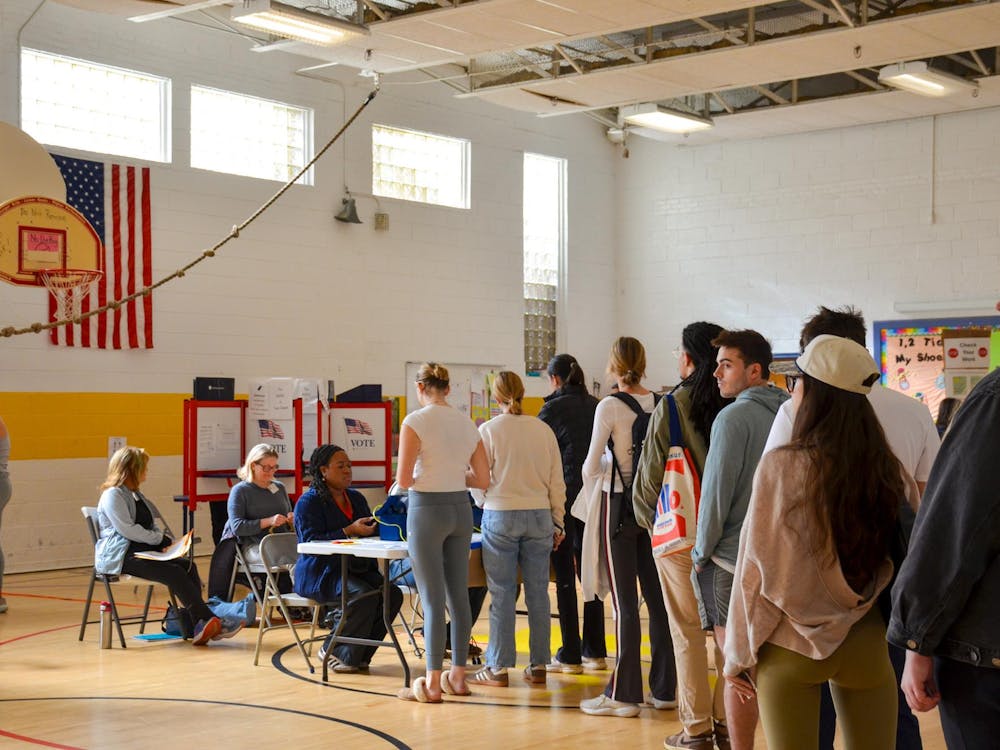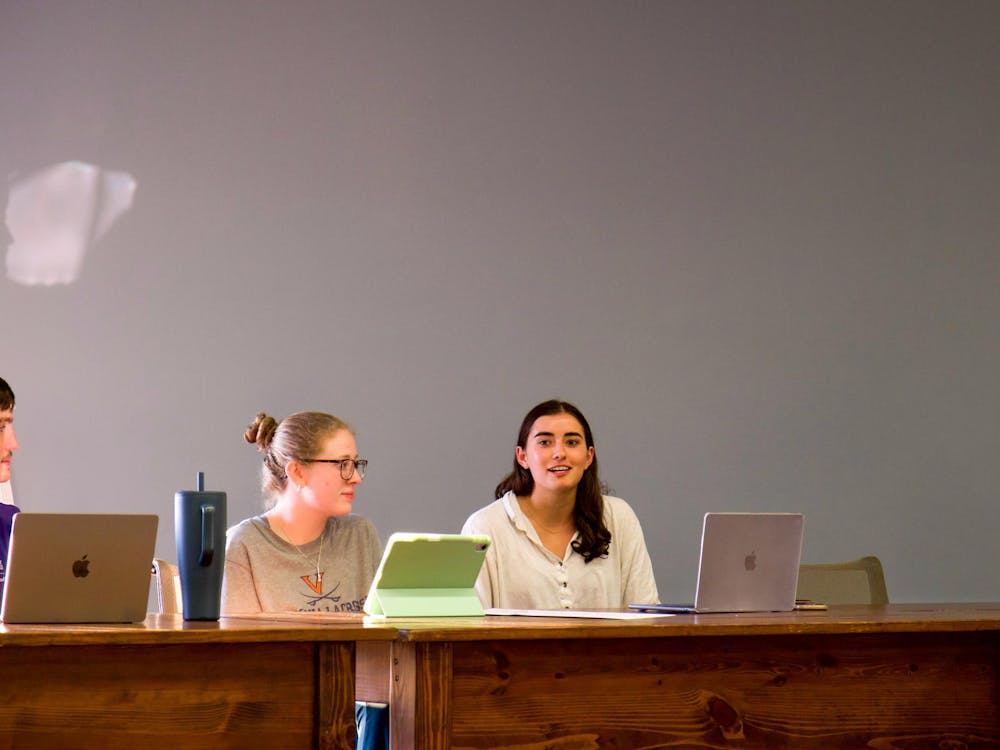In the upcoming Nov. 5 elections, Charlottesville voters will cast their vote on a "Palm Pilot on steroids."
That is how David Beirne, director of public affairs for Houston, Texas described the eSlate voting units, a new electronic voting system that replaces the outdated punch card system.
Houston has successfully used the eSlate in America's third largest county since November 2001.
Charlottesville voters will be using eSlate for the second time this November. The city used eSlate on a trial basis for the May 5 city council elections.
Unlike old voting systems, the eSlate complies with the Americans with Disabilities Act, ensuring private voting for people who need assistance, Charlottesville Voter Registrar Sheri Iachetta said.
The eSlate resembles a large Palm Pilot, with a screen that presents the voter's choices and a simple control pad. As with the punch card system, it can be collapsed into a suitcase-sized case.
In the eSlate system, voters obtain a random ID number from a booth at the election site, which allows the voter to gain access to one of the several eSlate units at the polls.
By manipulating the system's selection wheel, the voter then highlights election choices and presses a button to vote.
A summary screen finally appears, allowing the voter to make any changes before they hit a large red button to finalize their choices.
As in Houston, Charlottesville's implementation of eSlate marks a departure from punch cards voting. But according to Iachetta, the change is not a reaction to the Florida debacle of 2000.
In February 2000, Charlottesville invited four vendors to display their systems. Texas-based Hart InterCivic's eSlate was selected for its ability to facilitate private handicapped voting, Iachetta said.
The system includes adaptive devices that enable the blind, parapalegics and the paralyzed to vote with privacy.
Even Christopher Reeve could cast a secret ballot with the system, Iachetta said.
"There is a sip and puff, like a straw, device where one would sip to move among selections, and then blow to make a choice," she said.
Hart InterCivic representative Bill Stotesbury explained that the selection wheel, in lieu of a touchscreen-based system, provides a more accurate voting interface.
"Touchscreens have problems with calibration," Stotesbury said.
He said problems with touch screen accuracy were some of the greatest difficulties experienced last year in Florida's statewide legislative elections, where new electronic voting had been implemented.
In case a recount is necessary, the system stores voting records in three different locations, Stotesbury said.
Individual ballots will be stored in eSlate units, as well as in internal memory and in a removable PC card on a central server at each voting location.
Charlottesville invested $202,050 in the electronic system, Iachetta said.
The eSlate units, which cost $3,000 each, are being funded by a city loan of $52,000, and the city's sale of its old punch card machines to Virginia Beach for $25,000.
Iachetta said the city hopes to recover 90 percent of its cost from the federal government through the Federal Election Reform Act, which President George W. Bush is expected to sign soon.
Though 80 percent of Charlottesville voters in a May exit survey expressed approval of the new system, Politics Prof. Larry J. Sabato remains wary of unilateral investment in these machines.
Sabato said the punch card devices work very well if maintained properly, but he worries about electronic voting being oversold and proving difficult for those lacking experience with technology.
"New voting machines are nice," Sabato said. "But there is no substitute for civic education and well-run elections."






